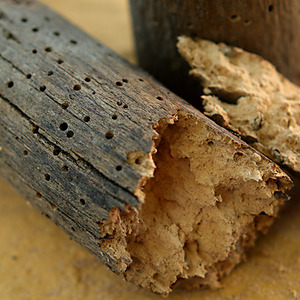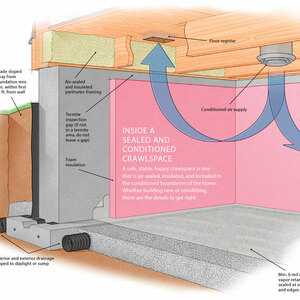Does anyone have experience with Tightbond 771-step flooring adhesive. Does it provide an acoustic barrier as advertised, IIC = 67? I have a coffred concrete floor with wire suspended plaster on metal lath ceiling below.
Discussion Forum
Discussion Forum
Up Next
Video Shorts
Featured Story

Fine Homebuilding is excited to be the official media partner of the 2024 Building Science Symposium series! This event offers builders, tradesmen, architects, designers and suppliers to discuss topics ranging…
Highlights
"I have learned so much thanks to the searchable articles on the FHB website. I can confidently say that I expect to be a life-long subscriber." - M.K.

















Replies
no stink'n idea........
but, I am thinking that the whole assembly that they used for this rating might need to be explained.
According to what I've read, IIC ratings above 70 is pretty good over a core learning space (presumably in a school). That the adhesive gives you that by itself seems like a stretch to me. Any "cushion" is going to help-carpet for instance.
Don't know your situation, but how many dance troupe's are going to be up on the second floor? Stiletto heels?
I'd give Franklin Adhesive's a call and talk directly. Other way would be to find comparable rating criteria on similar products.
The suspended ceiling below might very well act as a speaker diaphragm under the right conditions. You've certainly got the mass, but the separation might between the ceiling and floor might magnify rather than limit the vibration transmission.
If installed between two "membranes" an adhesive with the right properties can be quite effective. But so much depends on the nature of the "membranes" -- they must be relatively stretch-resistant. Generally a concrete, plywood, or flakeboard topped floor will be fairly stretch-resistant, but I don't know what sort of floor covering would.
acoustic adhesive
Thanks, Calvin. You're right, the type of floor assembly is the critical issue. The technical people at Tightbond say a number of possibilities were tested and that the one most like mine was rated at 67. That would be quite good, but that was in a controlled laboratory setting, not in an actual building. That's why I was looking for experience from the field. In my case I don't think it worked very well.
troost
So you have already installed using the adhesive?
acoustic adhesive
Yes, sort of. I'm in a 150 unit condo where some owners have installed wood floors. The earlier installations were glue downs with a standard adhesive. Those were loud, resulted in a lawsuit, and were either removed or covered with carpet. An acoustic underlayment is now required, Quiet Cor, Quiet Step, or equivalent, IIC greater than 55. We were thinking in terms of actual roll down membranes but the "or equivalent" may have gotten us in trouble. One installer used Tightbond 771-step and now we're getting complaints. Don't know why. Maybe the wrong trowl was used and it wasn't put it on thick enough. Maybe it's the product itself.
These tests can be very misleading. For example, when companies are describing their products perormance, they test in in an already very high performance structure. For example, "Look at mystery product A. When used on an 8" slab with 3 sheets of drywall and insulation, we received an IIC of 70! WOW!!!" Well, What would that same asembly test out at without mystery product A? Likely the same IIC of 70.
If you want real, meaningful data, you would look at Delta-IIC. Test the floor system with and without mystery product A, and see what the difference is. If the Delta IIC figure isn't 19-21 points, it's not worth adding or considering.
Using an adhesive as asked by the OP will not give much IF ANY improvement.
I agree. The IIC rating of the original floor assembly is the key issue. In my case of concrete floor, wire suspended plaster ceiling, and no insulation, it's probably around 35 -45, but I wouldn't know without it actually being measured. The question is whether the "acoustic adhesive" under wook could add the extra 22 - 32 units need in my case to achieve the advertized value of 67. Sure, it may have done that in a laboratory assembly, but that's not described in detail and is not likely to be just like mine.
I was hoping that someone out there had used Tightbond 711-step (or a similar product) to installed a lot of wood floors in a lot of different concrete buildings and was generally satisfied with the results. Better still would be someone who had done a lots of before and after testing in the field, but that would be hoping for too much.